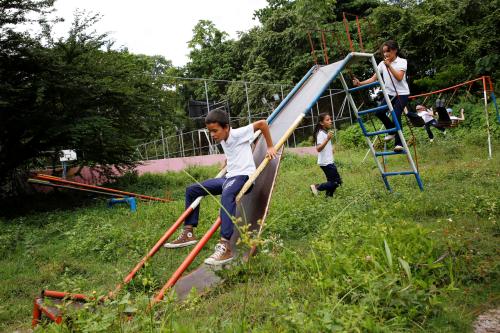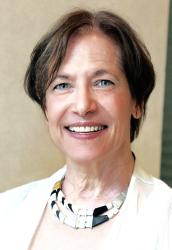Experts predict that by the year 2050 almost 70 percent of the world’s population will live in urban areas. This global demographic requires ensuring that cities are vibrant places with a high quality of life for all residents. Yet, when looking across the U.S., overall growth of the population in cities suggests a mysterious decline in the number of children. Why? Perhaps because urban living is expensive, stressful, and difficult for families. Cities aren’t built for children and their families.
How can we convert densely populated environments into family-friendly habitats that can support healthy living? Designers, city planners, community leaders, and behavioral scientists are working on cross-disciplinary solutions.
This challenge was at the heart of the Conscious Cities Festival at the Pratt Institute in Brooklyn, NY in October of 2019. The Conscious Cities movement began in 2015 and focuses on adapting to people rather than constantly forcing people to adapt to the strains of city life. Pressing issues of urban revitalization discussed at the festival included building resilient communities, healthy child development and parenting, reshaping later life, and urban design for mental health. And for four engaging days, we wrestled with some of the solutions to healthy child development and parenting with an interdisciplinary group of scholars and practitioners.
The challenge
Equity surfaced as one of the most pressing issues facing modern cities. Urban settings afford many advantages like shorter commutes to work, cultural resources, and better healthcare and education for some but not all of its residents—an issue known as “urban paradox.” Marginalized and disadvantaged families living just blocks from outstanding services are often left behind. The challenge: Ensuring that the youngest citizens in cities have access to the high-quality opportunities for care and for an education that set them on the path to success.
Marrying developmental science and placemaking
One promising approach to address this is Playful Learning Landscapes (PLL)—a movement that lies at the intersection between the science of learning and transformative placemaking. While on the surface these two fields have little in common, they provide a unique and powerful approach to promoting meaningful caregiver-child interactions, which are critical for healthy development. The Brookings Institution recently established a joint venture between the Center for Universal Education and the Bass Center for Transformative Placemaking to build a network of key stakeholders across a wide range of geographies in response to the growing interest on the topic and advance the theory and practice of designing cities to support children’s learning. Importantly, PLL targets the 80 percent of time that children spend outside of school—it infuses everyday spaces like bus stops, grocery stores, or walking to/from school or work with learning opportunities.
Two key elements of PLL include: (1) public spaces are enriched through lessons in developmental science that support how and what children learn; and (2) the process is driven by community engagement and is organic and culturally modifiable. The community is directly involved in the planning such that in the Urban Thinkscape project design, over 100 community members in Philadelphia helped design the space. PLL is not just a playground: It focuses on augmenting everyday experiences like supermarkets or bus stops to promote important family interactions between children and caregivers—interactions that are targeted to feed early language and STEM (science, technology, engineering and mathematical) growth.
PLL uniquely melds the science of learning through playful placemaking in communities, though other initiatives are also responding to the call for child friendly cities. For example, the Bernard van Leer Foundation launched Urban95, now in Bogota, Jordan, and Columbia, where they ask what can be done to make cities safer and more stimulating for children and families. In the United States, the nonprofit organization KaBoom! has decades of experience building safe, community-focused play spaces to engage and inspire children and adults of all ages to learn and play together. And UNICEF is devoted to changing cities with its Child Friendly Cities Initiative.
Philadelphia leads the way
Philadelphia has served as a model PLL city, largely in part because the research from the lab of blog author Kathy Hirsh-Pasek at Temple University and Roberta Michnick Golinkoff at the University of Delaware offers the scientific backbone and evidence for PLL. Across a wide range of events and activities such as permanent outdoor structures, short-term pop-up events, and one-time large events in public spaces, researchers have found a significant boost in precisely the kinds of caregiver-child interactions including conversations around STEM, literacy, and language that builds strong learning skills. An experiment at the Philadelphia Playful Learning Landscapes (PPLL) initiative transformed a daily trip to the supermarket into a learning opportunity by adding simple signage (e.g., “Where does milk come from?”) to promote caregiver-child conversations in Supermarket Speak. In addition, the previously mentioned Urban Thinkscape project infused a bus stop with learning science by adding puzzles to a bench and transforming the childhood favorite hopscotch game into an executive function activity. And Parkopolis enriched a public space with math and science learning by engaging children and their caregivers in a life-size board game where they roll “fraction dice” and move one and a half or two and and three-quarter spaces around the board.
The bottom line is that cities thrive when children and families thrive. The science is clear. We know how children learn, and meaningful interactions with caregivers are critical for developing the breadth of skills needed to succeed in a fast-paced, ever changing world. Transforming public spaces into playful learning opportunities is the vision of Playful Learning Landscapes—and critical for advancing the Conscious Cities movement.
Note: The Center for Universal Education receives funding for its work on Playful Learning Landscapes from the Bernard van Leer Foundation, which also supports Urban95. The views expressed in this blog are solely those of the authors.
Photo credit: Sahar Coston-Hardy







Commentary
At the intersection where education meets city planning: Playful Learning Landscapes
October 29, 2019